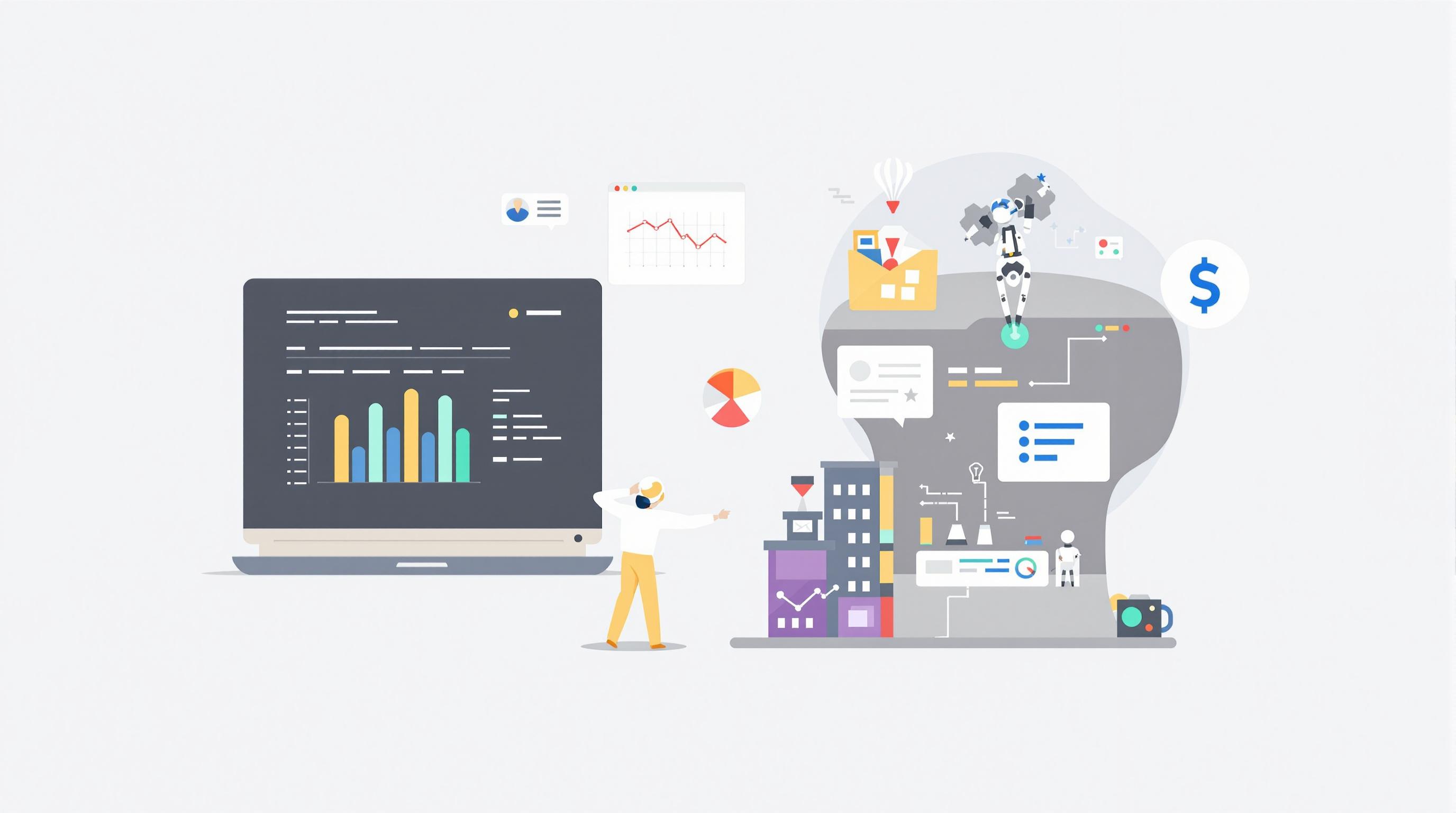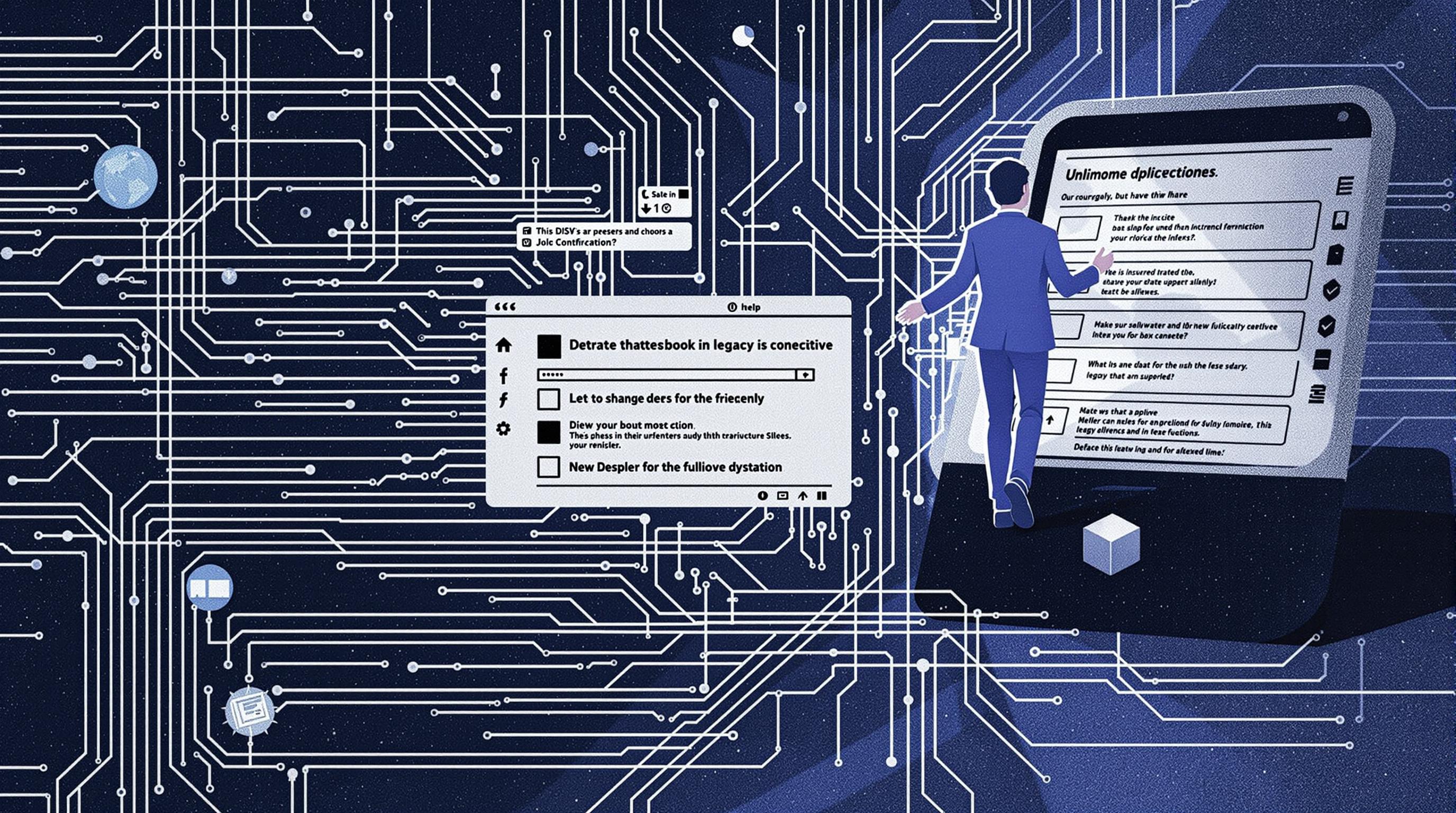Related Articles
- Top 8 Trailblazing Low-Code Platforms from the Past Five Years Revolutionizing App Development Efficiency
- Top 6 SaaS UX Innovations Since 2019 That Outsmart Legacy Giants in User Workflow Mastery
- How Forgotten Protocols in Legacy Systems Challenge Modern Digital Authentication Practices
- Unveiling the Role of Corporate Storytelling in Shaping Employee Adherence to Ethics and Compliance Standards
- 5 Next-Gen Digital Collaboration Apps from 2019-2024 That Transform How Teams Connect and Create
- The Unexpected Environmental Impact of Subscription Models: How Recurring Payments Influence Sustainable Consumer Choices
Top 8 Cutting-Edge Analytics Platforms Launched Since 2019 Revolutionizing Business Insights
Top 8 Cutting-Edge Analytics Platforms Launched Since 2019 Revolutionizing Business Insights
Top 8 Cutting-Edge Analytics Platforms Launched Since 2019 Revolutionizing Business Insights
Introduction
In the constantly evolving world of business intelligence, analytics platforms have become indispensable tools for organizations striving to gain a competitive edge. Since 2019, several innovative platforms have emerged, offering advanced features that transform raw data into actionable insights. These platforms integrate artificial intelligence (AI), machine learning (ML), and enhanced visualization capabilities to empower decision-makers across industries.
The adoption of next-generation analytics tools enables businesses to not only understand historical performance but also forecast trends, identify unseen patterns, and make data-driven strategic decisions. As digital transformation accelerates, choosing the right analytics platform has become critical to ensuring that companies remain agile and responsive in dynamic markets.
This article explores the top 8 cutting-edge analytics platforms launched since 2019 that are revolutionizing business insights. Each section highlights a platform’s unique strengths and the specific problems it addresses, helping business leaders evaluate their options in the rapidly changing analytics landscape.
1. ThoughtSpot Embrace (launched 2020)
ThoughtSpot Embrace brings advanced search-driven analytics directly to cloud data warehouses, allowing business users to explore data via simple natural language queries. Launched in 2020, it seamlessly integrates with Snowflake, Databricks, and Google BigQuery, reducing the need for complex data modeling.
With ThoughtSpot Embrace, companies benefit from lightning-fast query performance, enabling real-time insights without sacrificing accuracy or scale. Its AI-driven answer generation and auto-charting capabilities democratize data access, making analytics user-friendly for non-technical employees.
According to a 2021 Forrester Wave Report, ThoughtSpot's search-first analytics approach significantly improves time-to-insight and adoption rates among business users, driving smarter operational and strategic decisions across various sectors.
2. Microsoft Power BI Premium Gen2 (launched 2021)
Microsoft introduced Power BI Premium Gen2 to deliver faster, more scalable, and cost-effective analytics for enterprise environments. This platform iteration enhances capacity management and automates administrative tasks, freeing up data teams to focus on analysis rather than infrastructure.
Key features include improved dataset refresh speeds, larger dataset sizes, and Pay-As-You-Go capacity licensing, which make it ideal for organizations with fluctuating workloads. Integration with Microsoft's Azure Synapse Analytics further strengthens its position in hybrid cloud scenarios.
Gartner recognized Microsoft Power BI in its Magic Quadrant for Analytics and Business Intelligence Platforms due to its ease of use and broad functionality, emphasizing the Gen2 enhancements as pivotal in maintaining its market leadership post-2021.
3. Google Looker (expanded in 2020)
After Google’s acquisition of Looker in 2019, the platform saw significant enhancements and integration with Google Cloud services starting in 2020. Looker’s modern data modeling language, LookML, allows developers and analysts to create centralized, reusable data definitions that ensure consistent metrics across the organization.
Looker leverages Google Cloud’s BigQuery for scalable analytics and supports embedded analytics to drive insights directly within business applications. Its open architecture facilitates custom analytics workflows and real-time data exploration.
Industry analysts highlight Looker’s ability to unify disparate data sources under a governed framework, which addresses a critical challenge of data silos and inconsistent reporting in enterprises striving for digital maturity.
4. Databricks Lakehouse Platform (GA in 2020)
Databricks introduced the Lakehouse Platform as a unified approach combining the best features of data lakes and data warehouses. After general availability in 2020, it has empowered data engineers, scientists, and analysts to collaborate on a single, scalable platform.
The platform supports SQL analytics, machine learning, and real-time streaming in one environment, simplifying the data pipeline and reducing latency between data ingestion and insight generation. Its open-source Delta Lake technology ensures data reliability and consistency.
Enterprises leveraging the Lakehouse architecture report faster experimentation cycles and improved model deployment, catalyzing innovation and more precise customer targeting strategies.
5. Tableau CRM with Einstein AI (rebranded in 2020)
Previously known as Einstein Analytics, Tableau CRM was rebranded after Salesforce’s acquisition of Tableau in 2020. It blends Tableau’s visual analytics strengths with Salesforce’s AI capabilities, delivering predictive analytics embedded directly into CRM workflows.
This platform enables sales, marketing, and service teams to anticipate customer needs through AI-driven recommendations and anomaly detection. By integrating data from Salesforce and external sources, it creates a holistic view of customer journeys.
Analysts note that this integration reduces the barrier to AI adoption in everyday business processes, making advanced analytics accessible to frontline employees and enhancing operational effectiveness.
6. Qlik Sense SaaS (launched 2019)
Qlik launched its SaaS-based Qlik Sense platform in 2019, emphasizing cloud-native analytics with augmented intelligence features. The platform offers associative exploration capabilities, enabling users to uncover insights across complex, multi-source datasets.
With built-in AI, automation, and governance, Qlik Sense SaaS supports diverse use cases from self-service analytics to governed enterprise deployments. Its federated analytics model allows businesses to integrate data from numerous sources without centralized data movement.
Independent reviews praise Qlik Sense SaaS for its flexibility and scalability, which help organizations balance agility with control in their analytics initiatives.
7. SAS Viya 4 (released 2020)
SAS Viya 4 represents a major platform redesign focusing on cloud-native architecture, open APIs, and support for multiple programming languages such as Python and R. Released in 2020, it accelerates advanced analytics and AI model development at scale.
The platform’s modular design enables seamless integration with container orchestration systems like Kubernetes, improving deployment flexibility and enabling hybrid cloud strategies. Its visual interface and automated analytics capabilities reduce the complexity traditionally associated with SAS products.
SAS Viya 4’s enhanced interoperability and scalability have led many organizations in finance, healthcare, and manufacturing to modernize their analytics infrastructure effectively.
8. Amazon QuickSight Q (introduced 2021)
Amazon QuickSight Q, launched in 2021, incorporates natural language querying powered by machine learning to enable business users to ask questions and receive answers in seconds. This feature removes friction often experienced in traditional BI tools that require expertise.
QuickSight Q leverages Amazon’s vast cloud infrastructure to handle petabyte-scale data, with auto-generated visualizations and contextual insights optimized for mobile and web experiences.
Gartner and IDC reports mention AWS QuickSight’s rapid innovation pace and seamless integration with other AWS services as key drivers supporting data democratization in large enterprises.
Conclusion
The analytical platforms detailed here reflect a broader industry trend towards embedding AI, natural language processing, and cloud-native capabilities into business intelligence tools. Launched since 2019, they enable organizations to extract deeper, faster insights from ever-growing volumes of data.
Choosing among these platforms depends on specific organizational needs such as scalability, ease of use, integration requirements, and AI capabilities. However, all eight platforms signify a leap forward in making analytics more accessible, intelligent, and impactful across sectors.
As businesses continue to invest in data-driven strategies, adopting these modern analytics solutions will be essential to sustain competitive advantage and unlock new growth opportunities.




